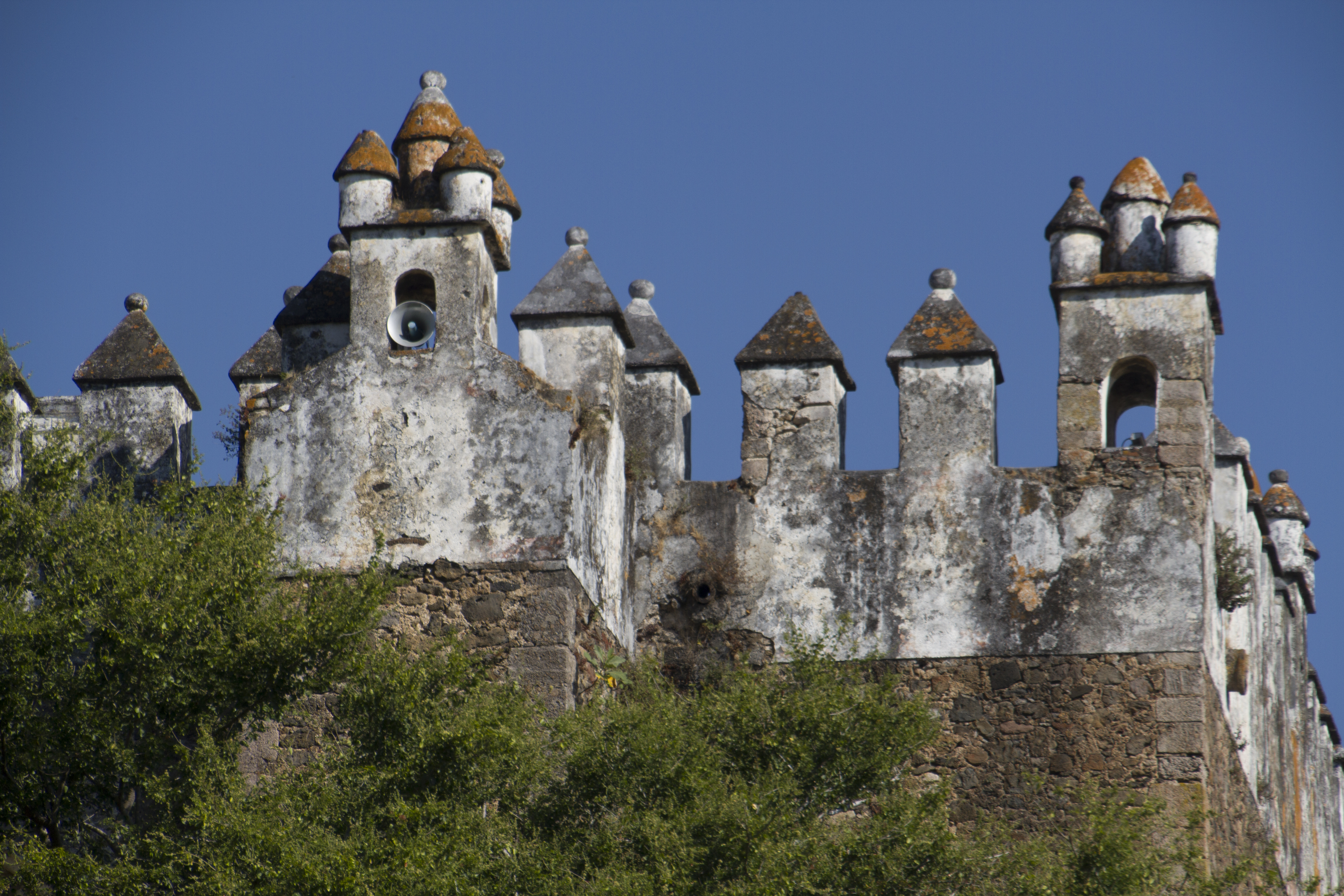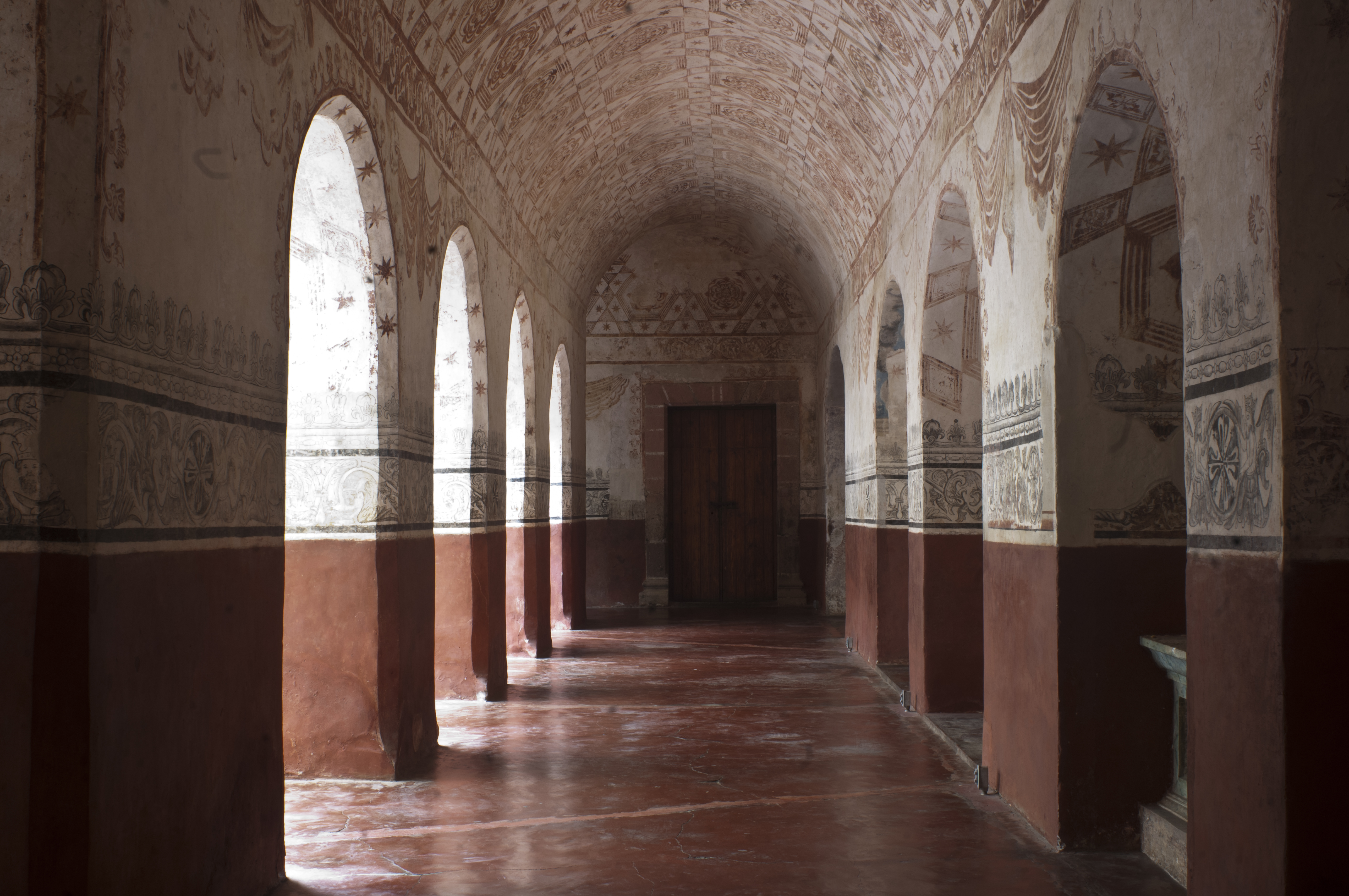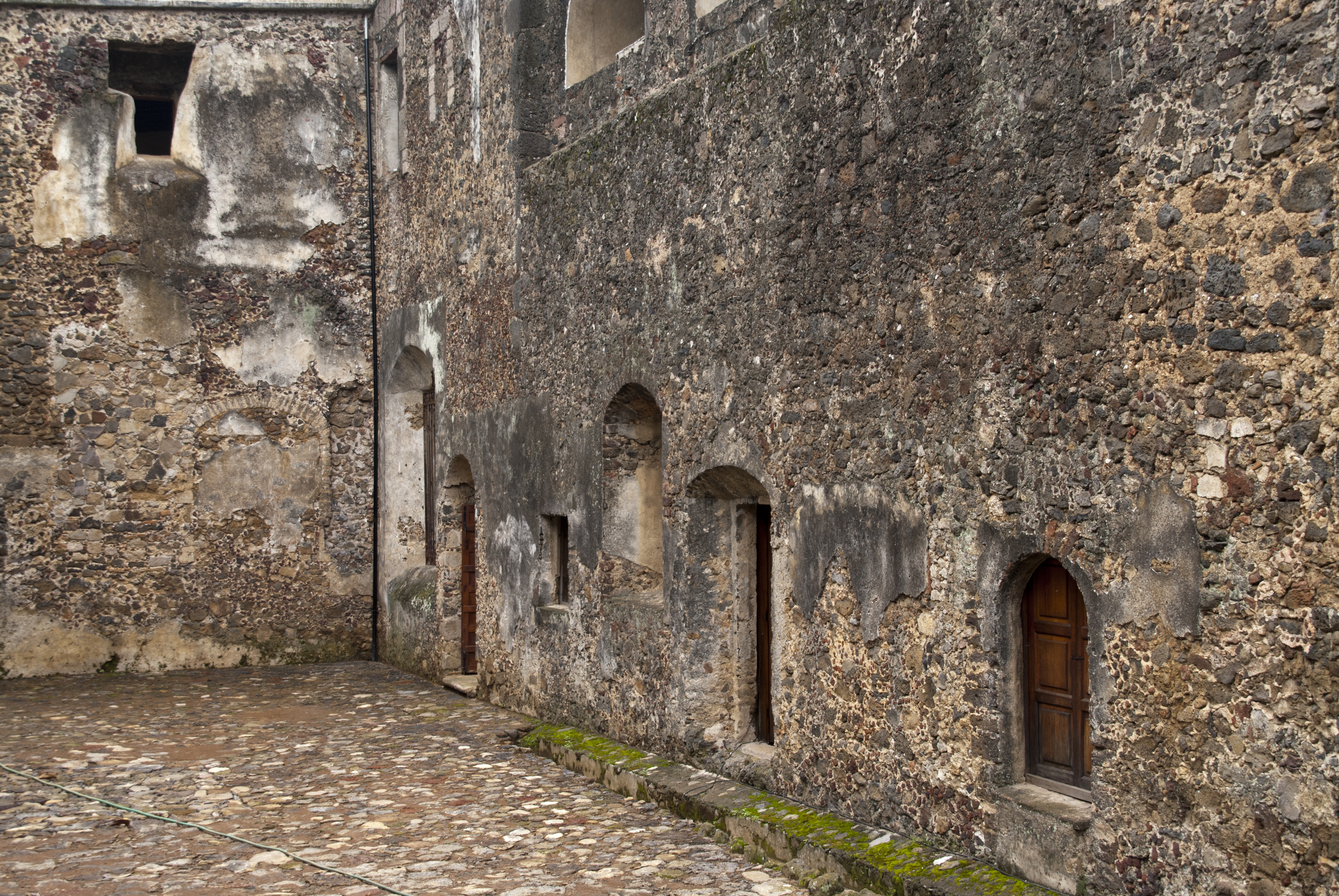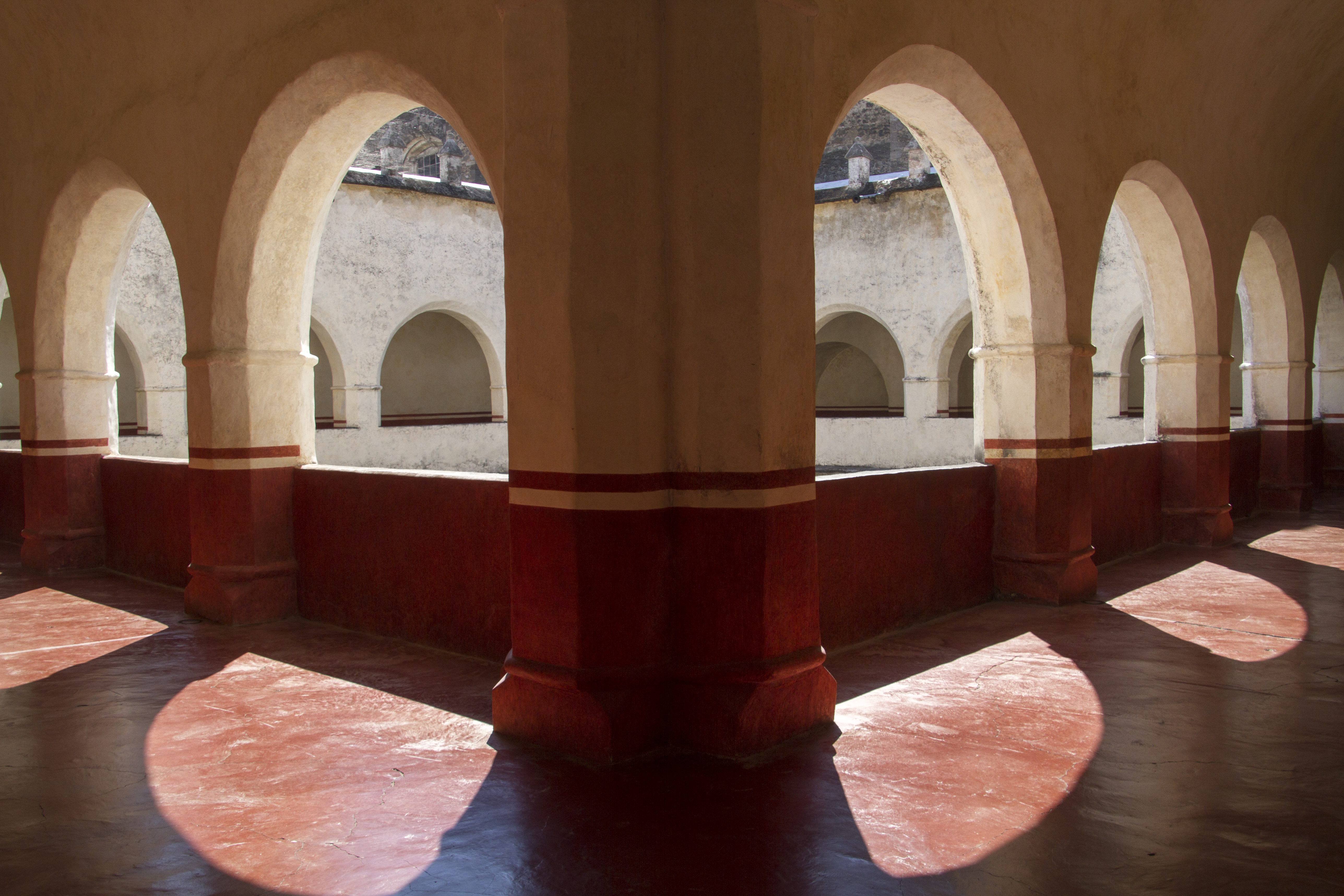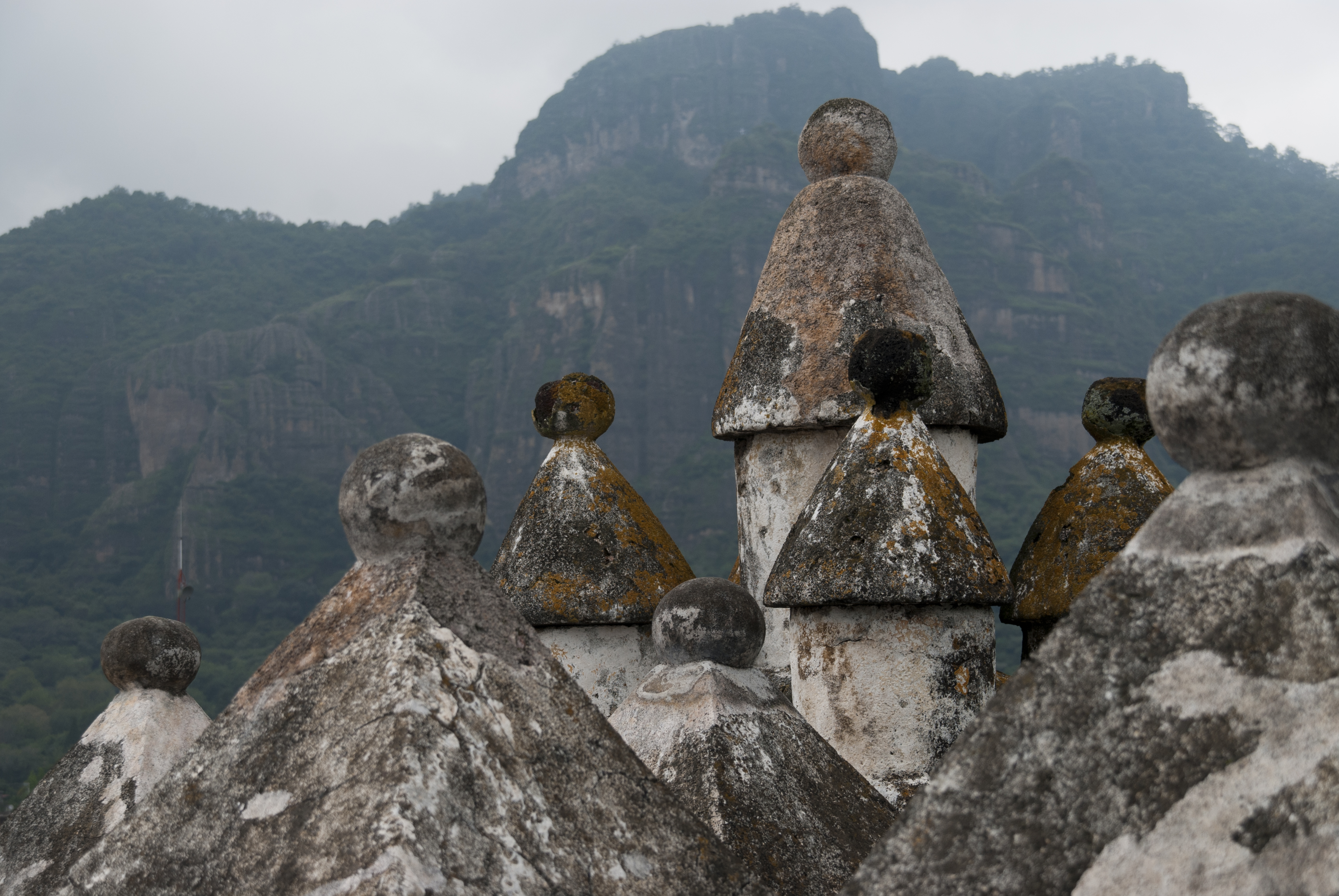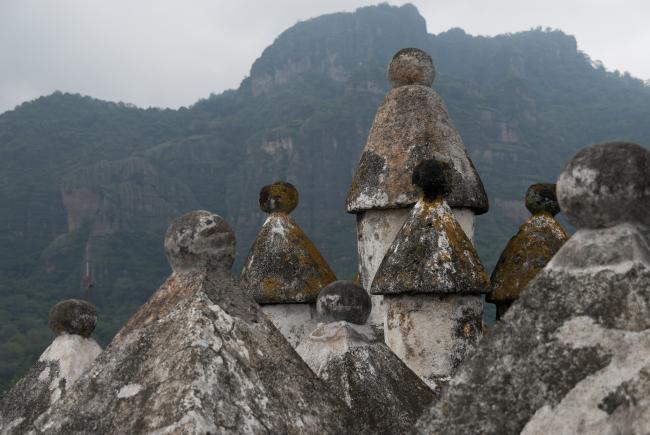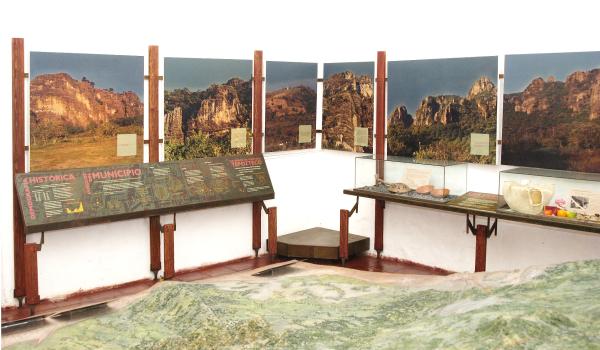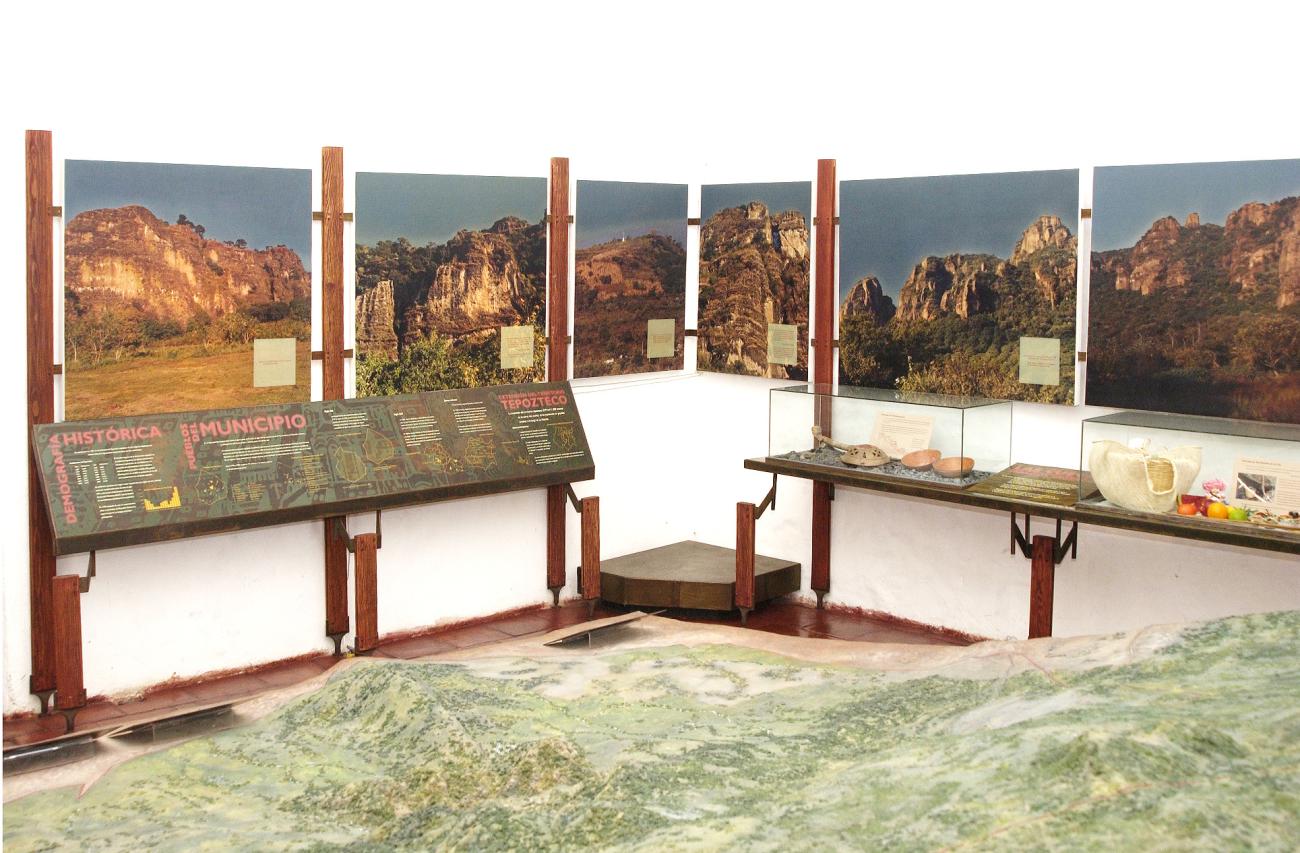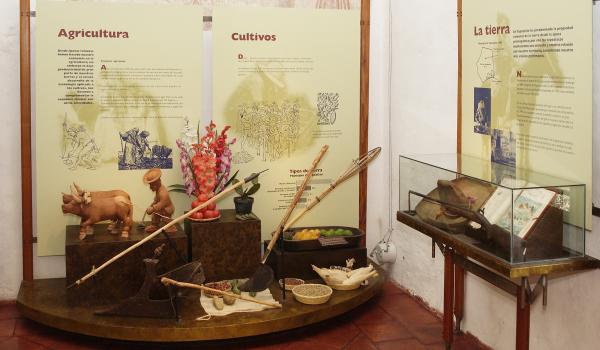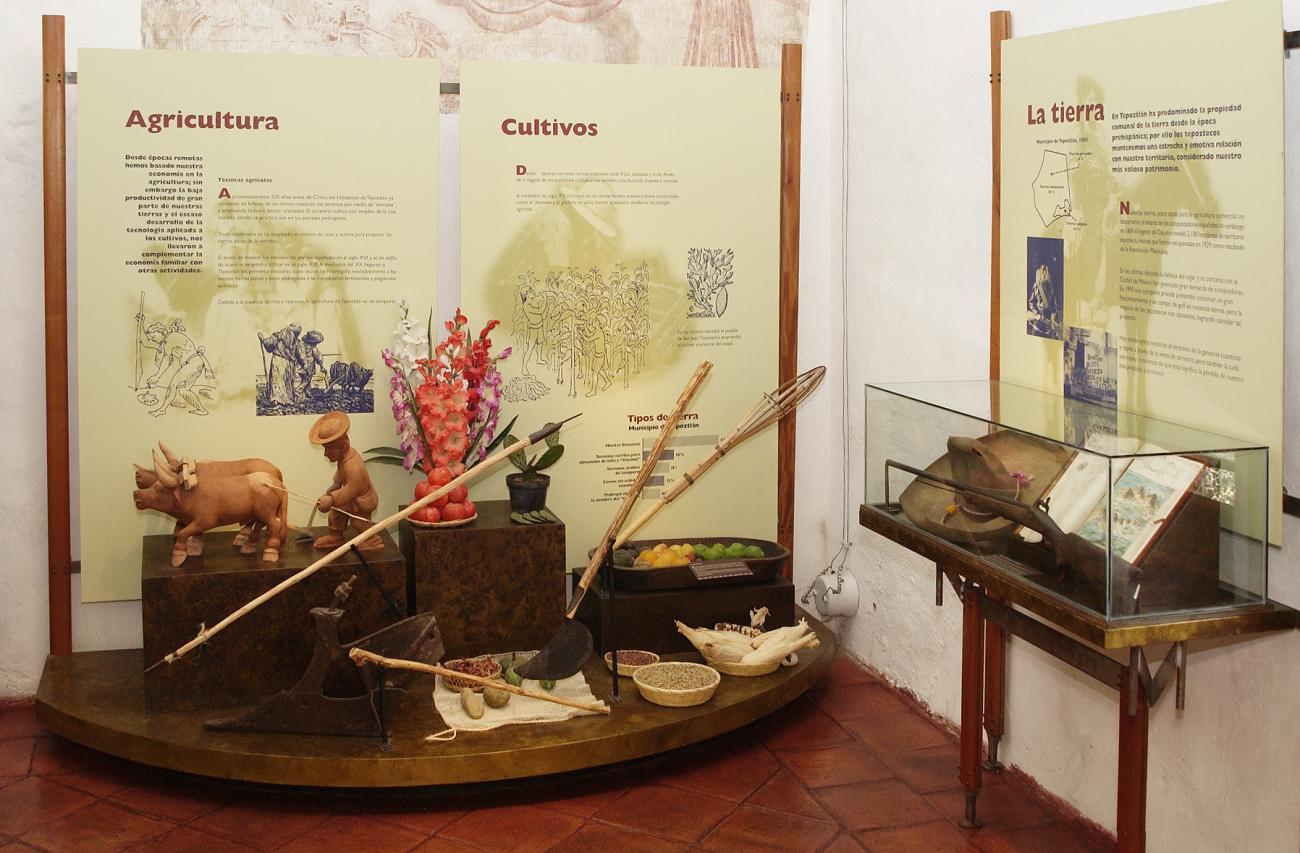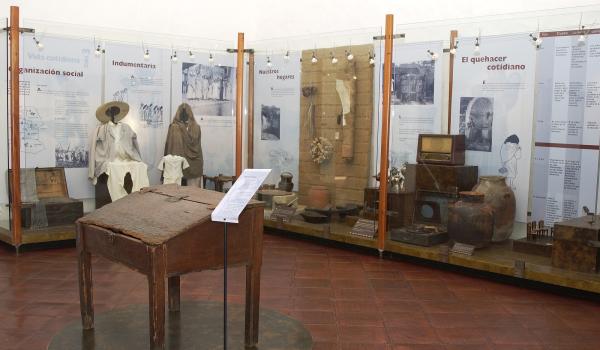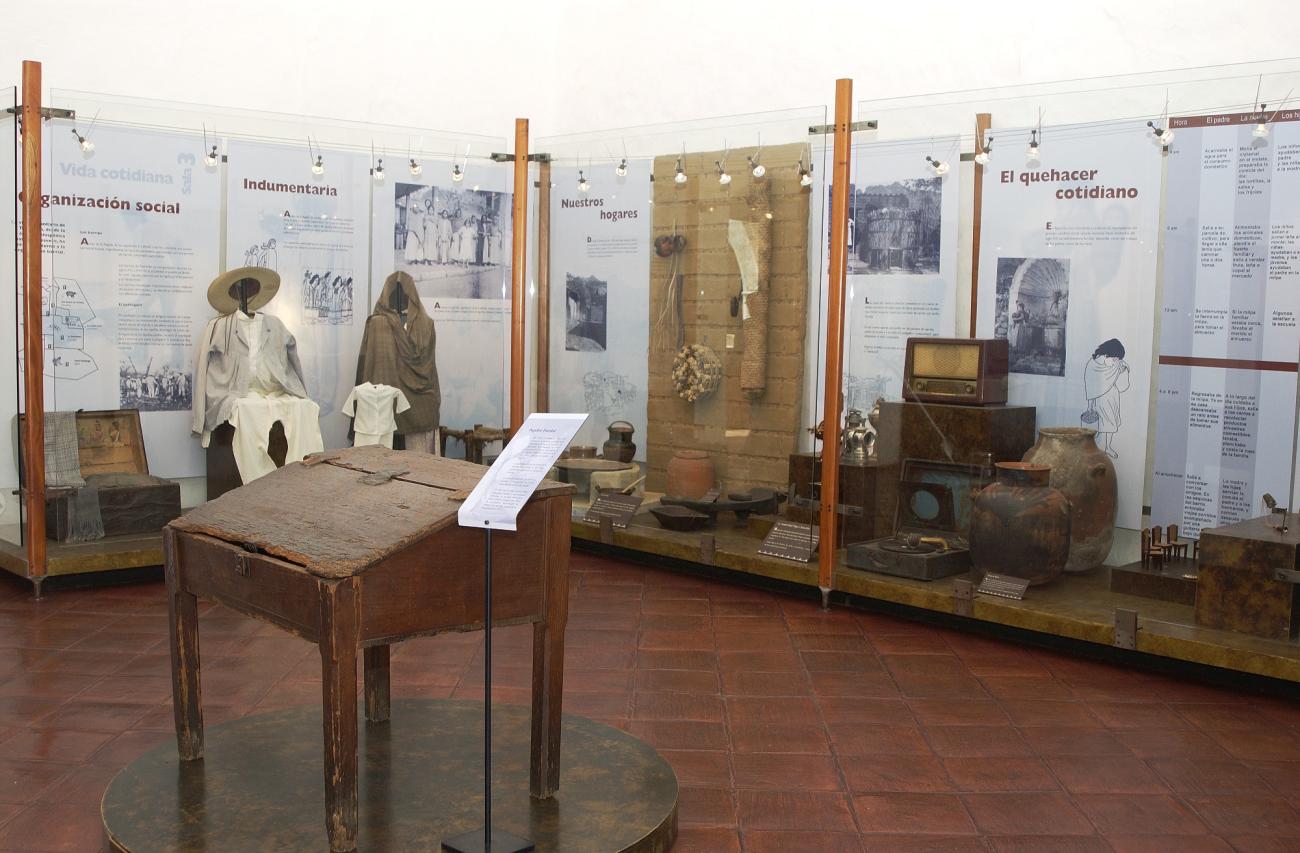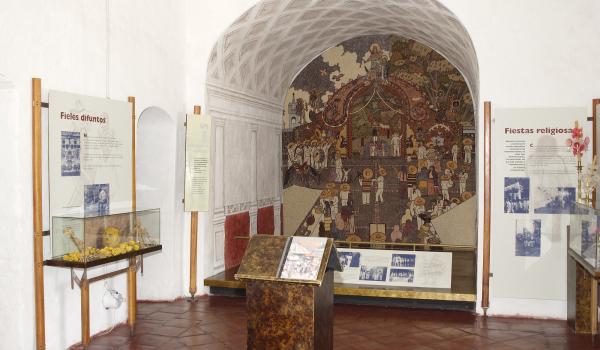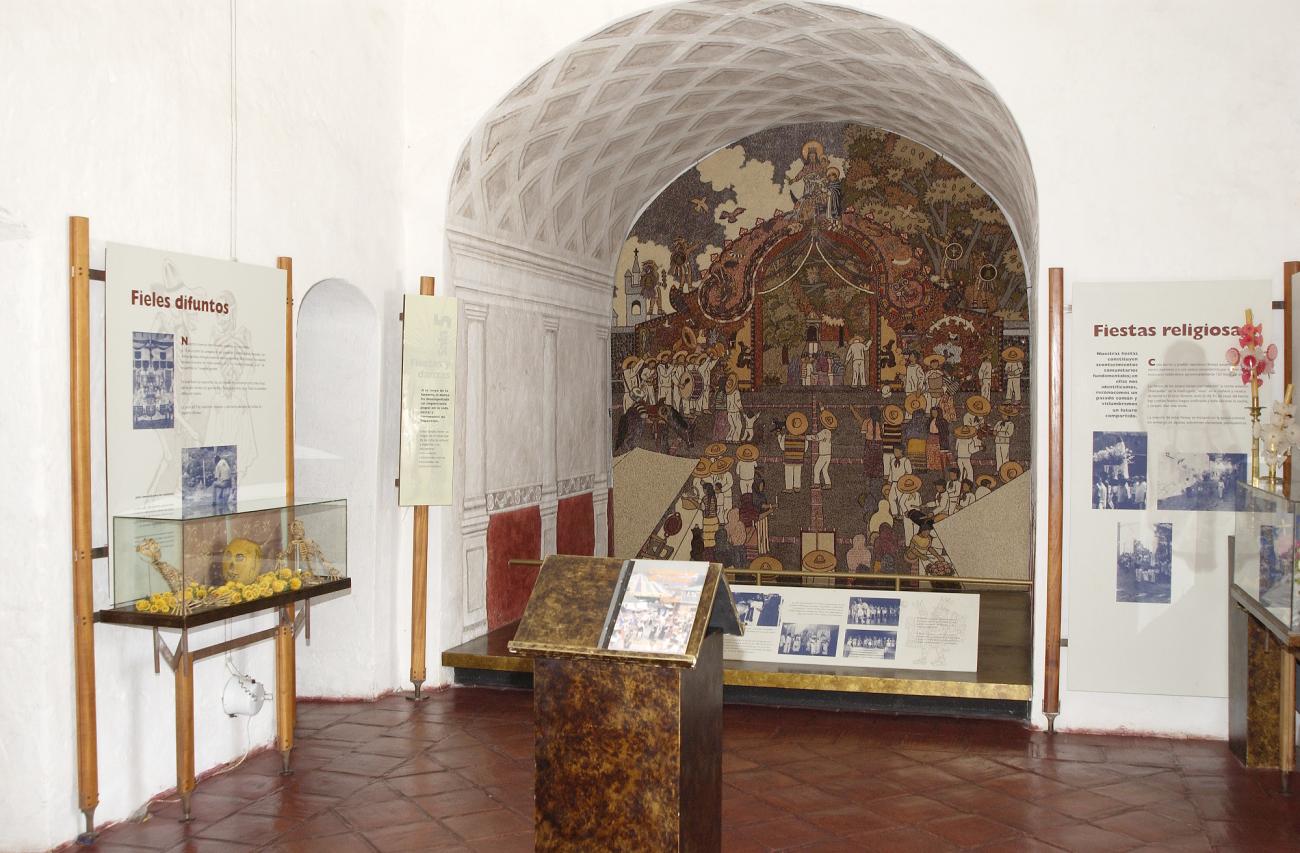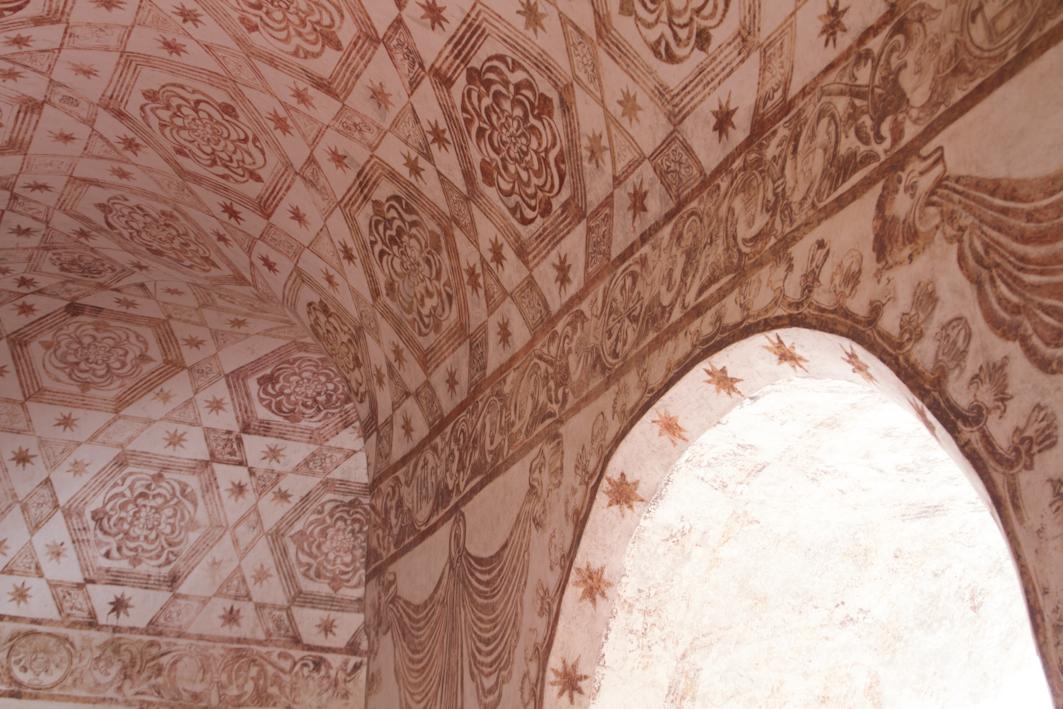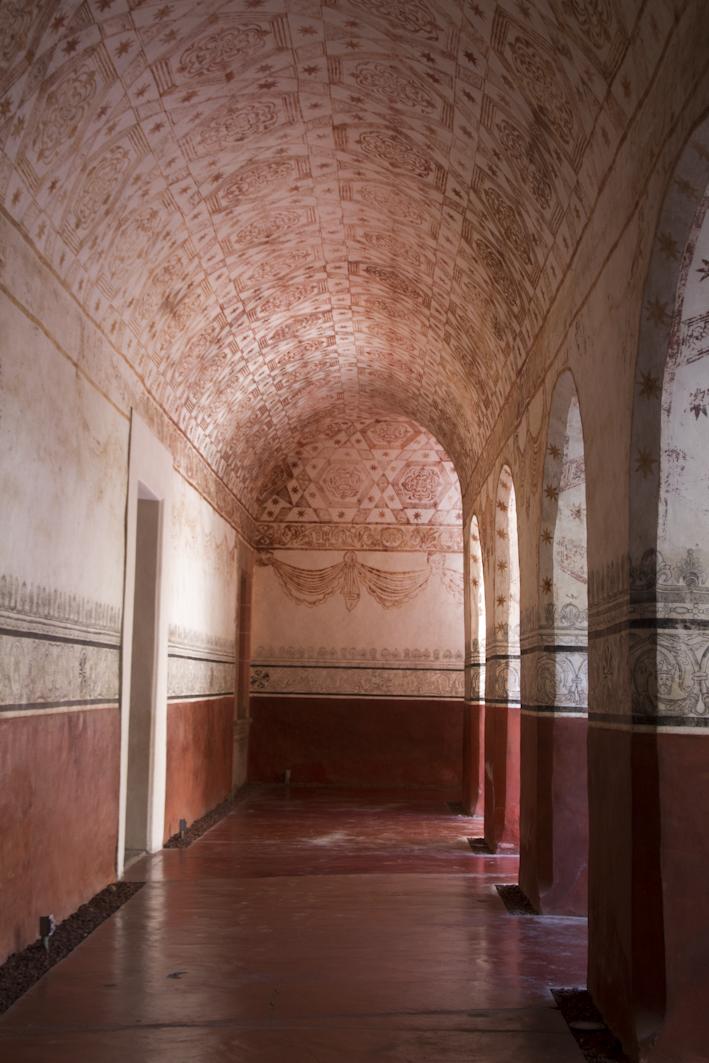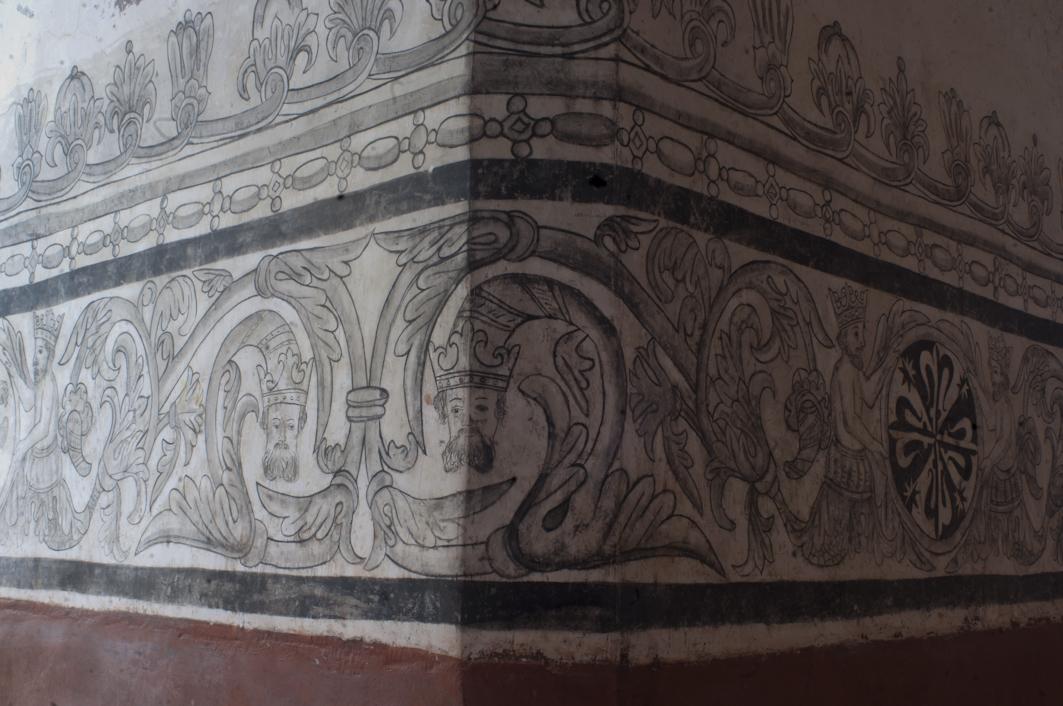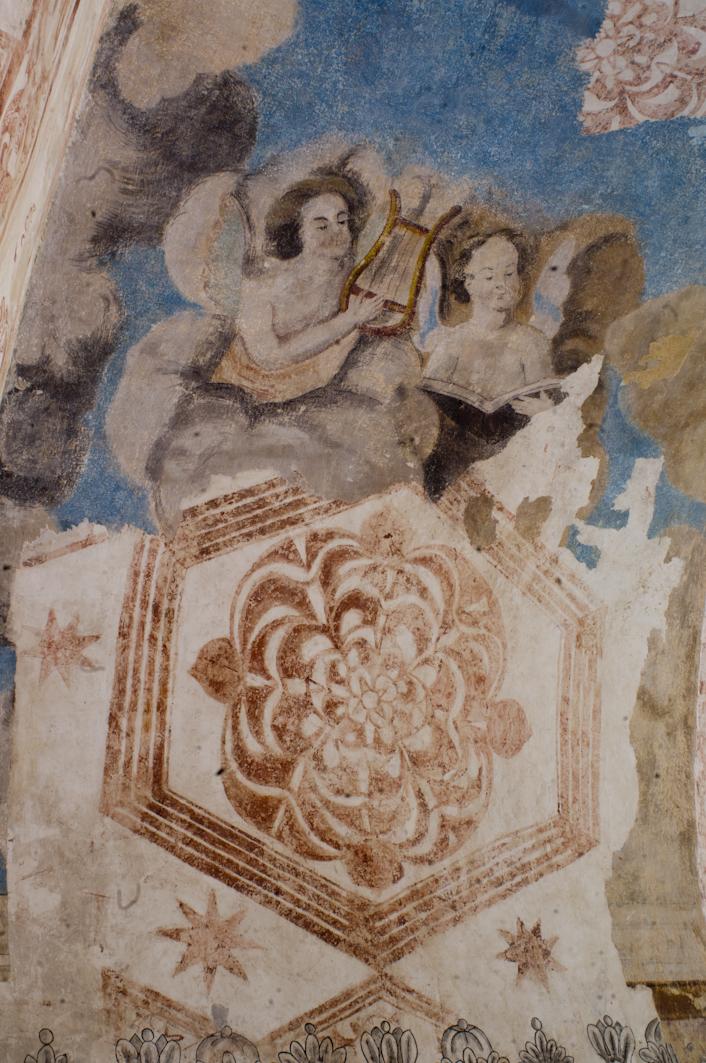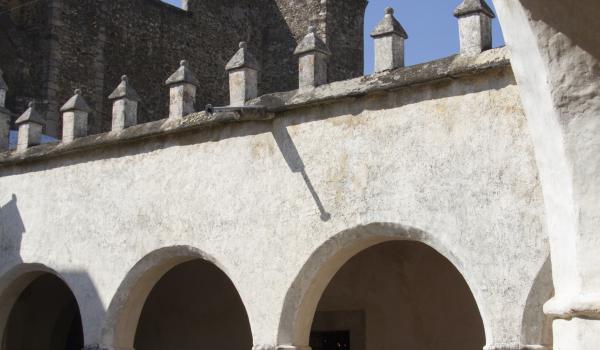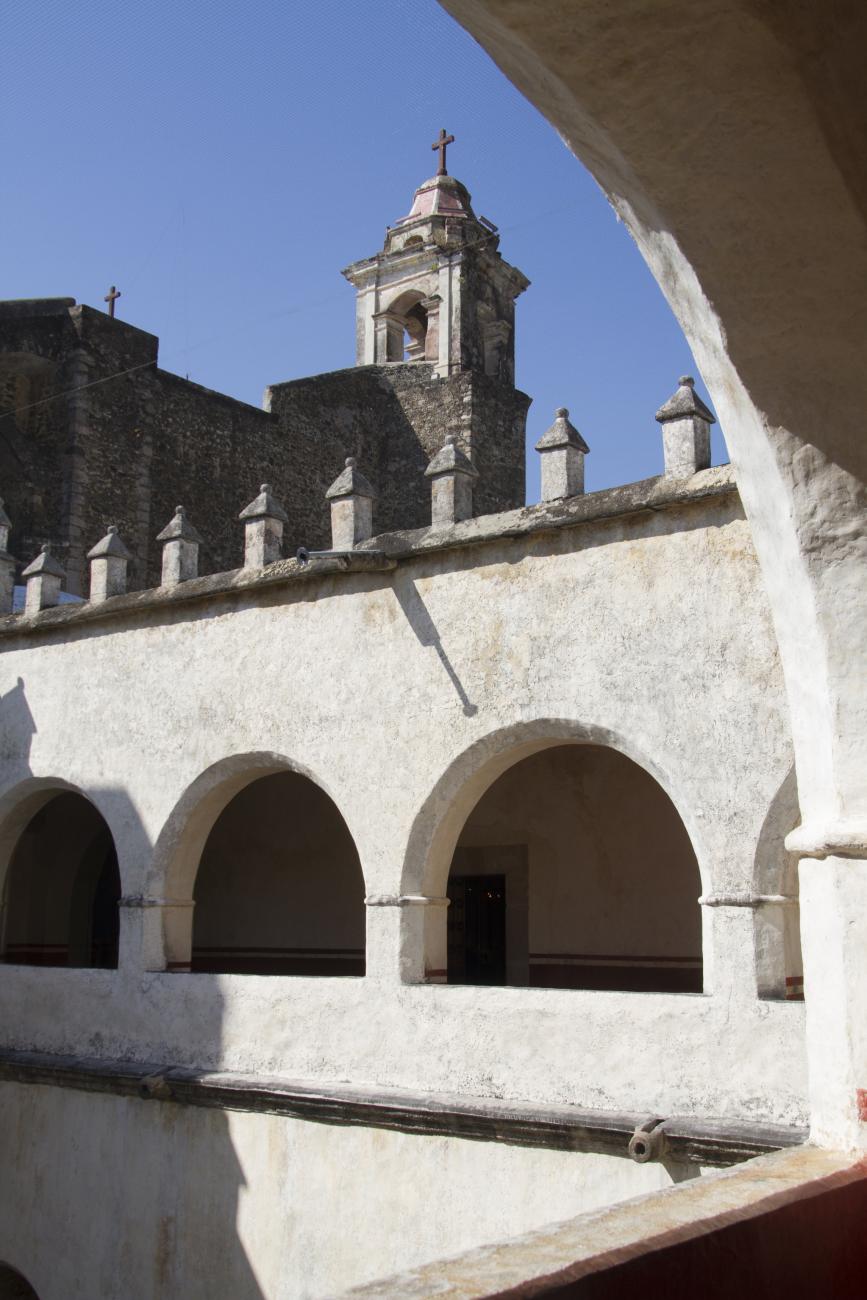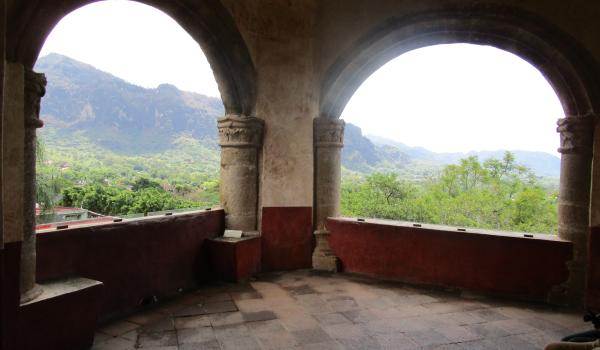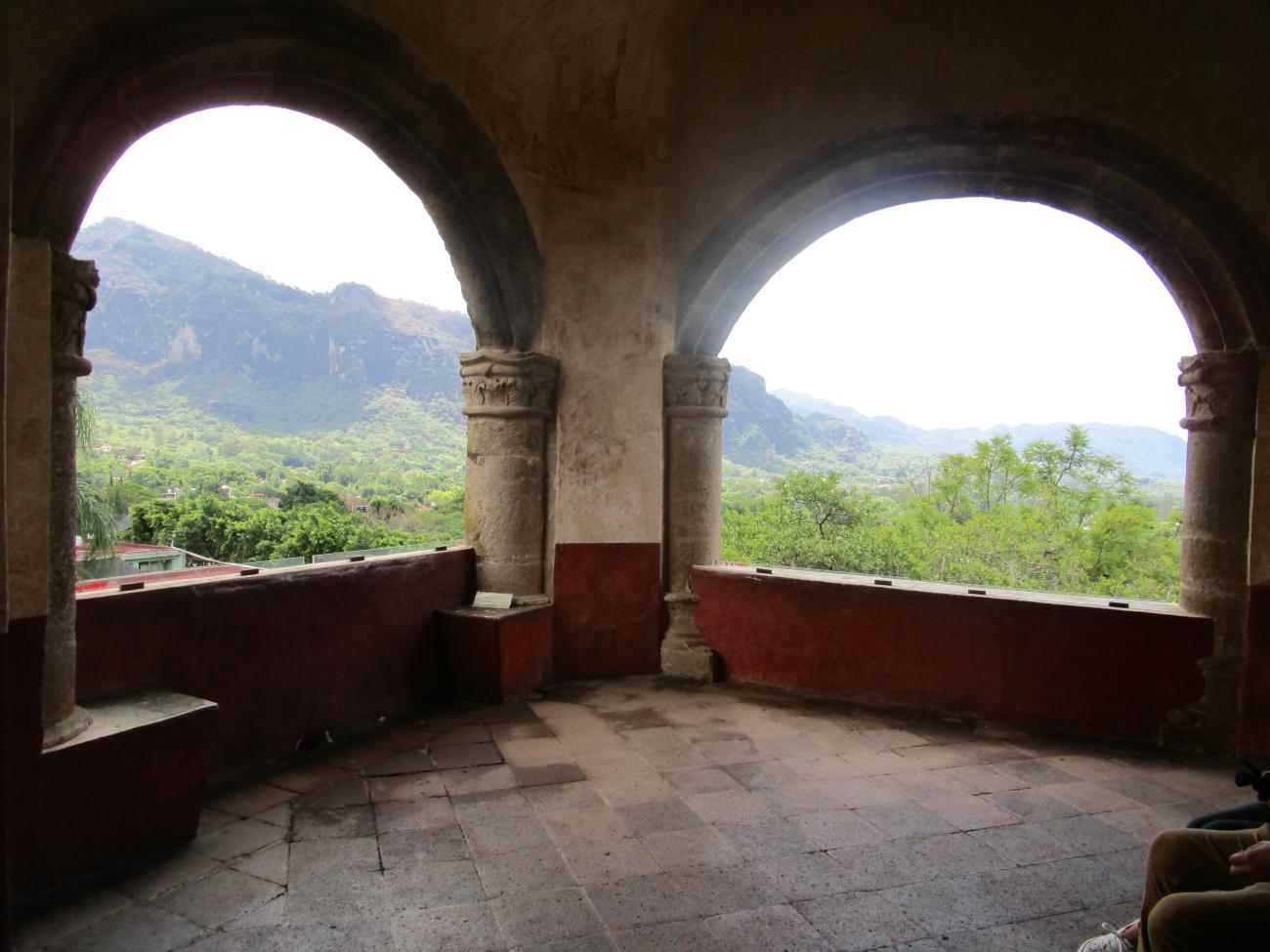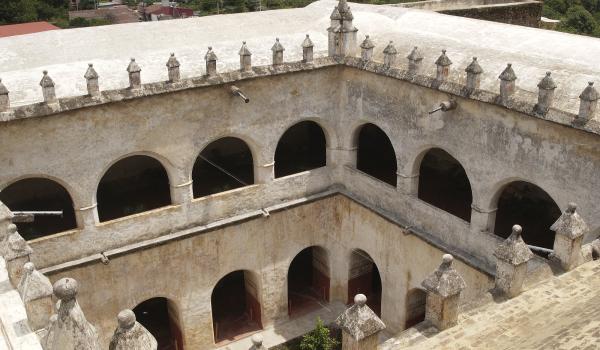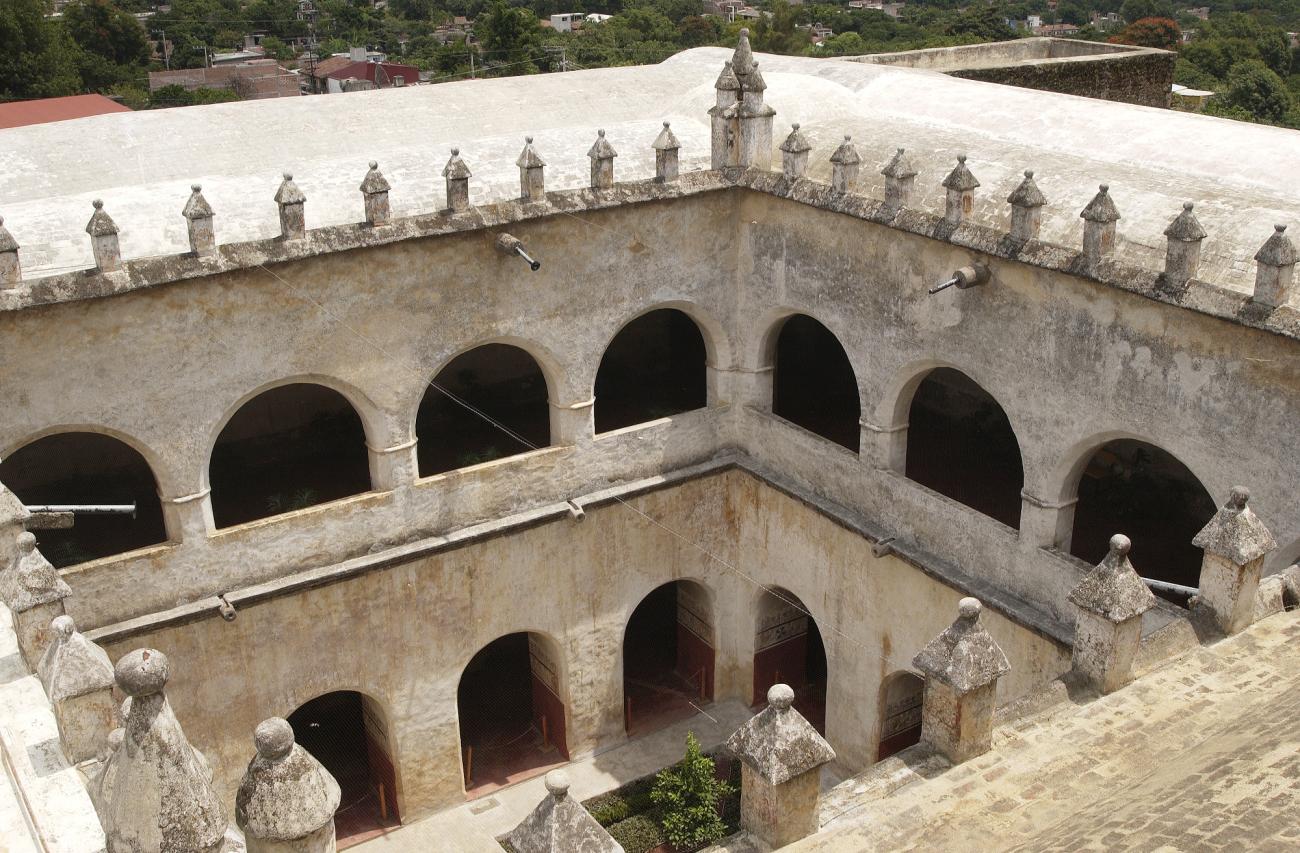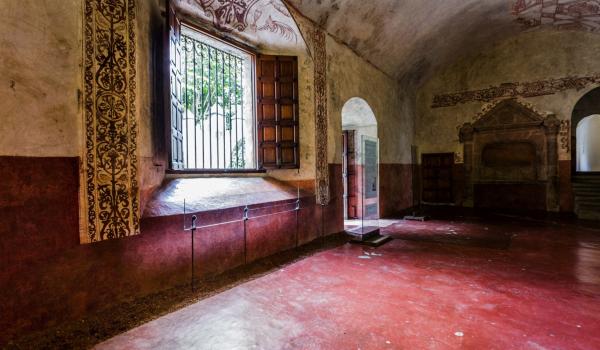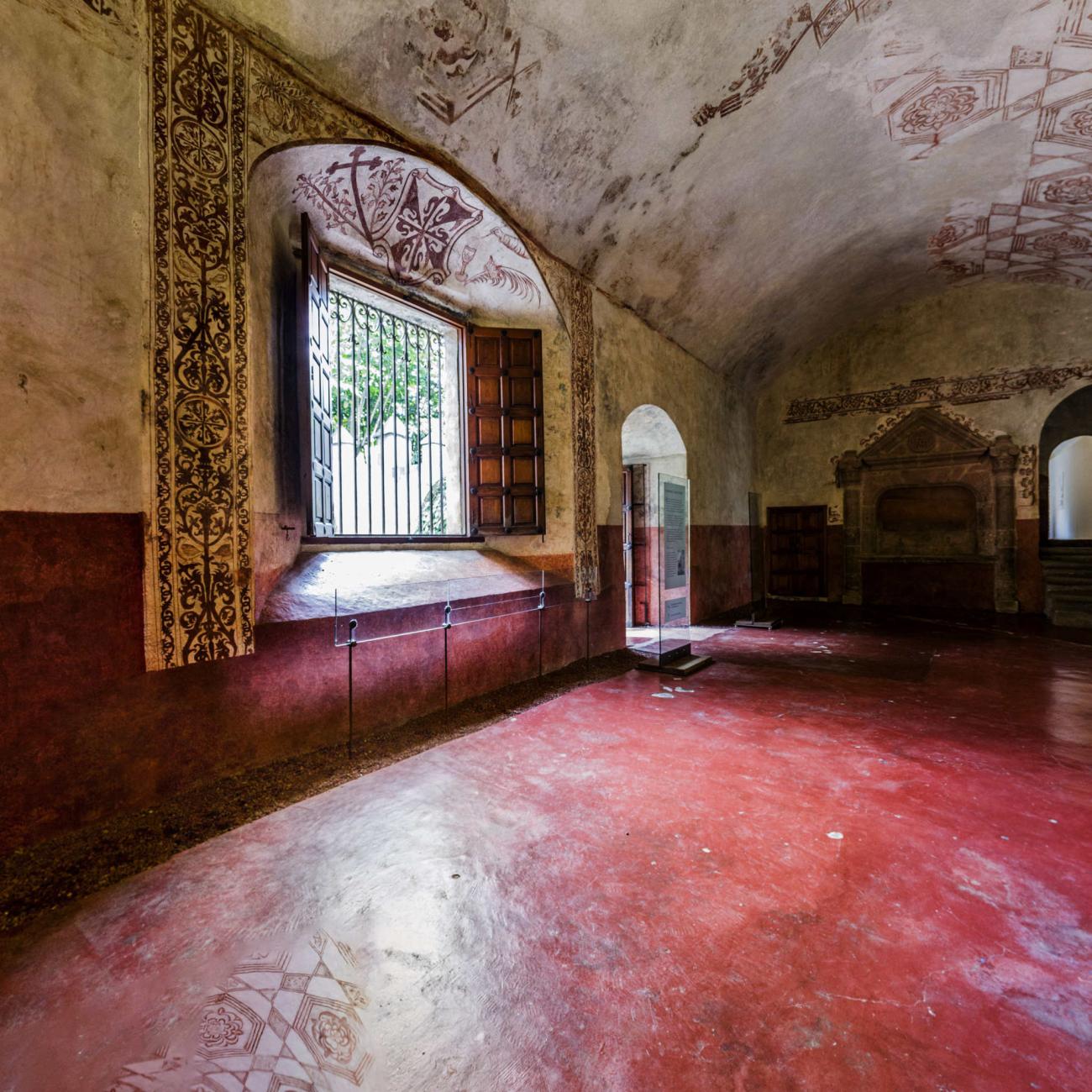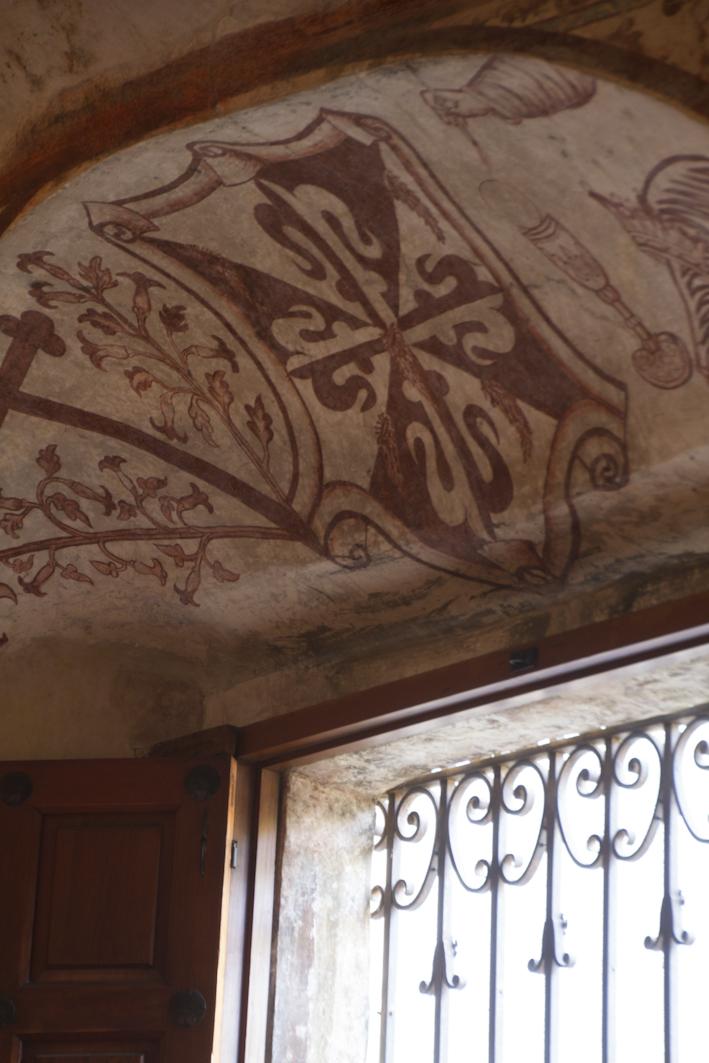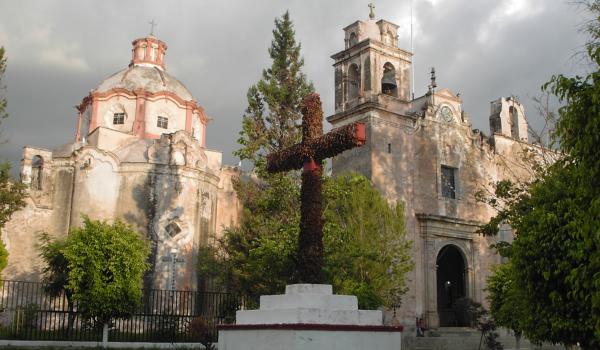The monastery was built between 1555 and 1580 by indigenous Tepoztecans under the orders of Dominican friars, and it was dedicated to the Virgin of the Nativity. It has an extensive atrium, posa chapels, a cloister adorned with a fountain, a garden and a single-naved church. The main entrance facade of this church shows Our Lady of the Rosary accompanied by Saint Dominic and Saint Catherine of Siena, angels and cherubim, the monogram of the Virgin Mary and the flowered cross with stars typical of the Dominican Order, as well as a faithful hound with the torch of the faith, another symbol of the Dominican presence. The church’s apse displays gothic ribbing. The inside of the monastery has beautiful al fresco decorations in vaults and corridors, which include geometrical shapes and flowers dedicated to the Virgin, symbols of the Dominican Order, acanthus leaves and strange kings with fishtails, amongst other unidentified figures, as it was common at the time for people to decorate churches, monasteries and convents with drawings copied from books of the period.
In 1993, the INAH began a project to restore it. The Parish Church of the Nativity is now a working church, whilst the former monastery houses the Tepoztlán Museum and Historical Documentation Center. The museum was inaugurated on November 26, 2000, and is located on the top floor of the cloister. It consists of five exhibit rooms, in which visitors can get to know different aspects of the history and people who lived in what is today the municipality of Tepoztlán, Morelos.
The building’s diversity of styles is noteworthy, as renaissance, gothic and plateresque elements have been added to a medieval-style courtyard. Also of note are the very elaborate and numerous original mural paintings still preserved within it, above all in the lower cloister, most of which were applied to the church in the sixteenth century.
An inquisitive eye (and a trained guide) will enable visitors to discover more than one hundred graffiti scratched in the walls of the building over the course of its history. These document another course taken by the building, when visitors during its period of neglect seized the opportunity to record their passage. The viewing platform located on the former monastery’s top floor is a must-see. Through its arches, we can appreciate the extraordinary landscape of Tepoztlán, including the northern range of the Tepozteco and the eastern valleys towards Cuautla.
The first room of the History Museum contains a large scale relief model of the municipality of Tepoztlán for visitors to get their bearings and discover this territory’s natural diversity, with its different altitudes, micro-climates and contrasting vegetation. These characteristics led to most of the area being declared a National Park in 1937, and an ecological reserve in 1988 (the Ajusco-Chichinautzin Biological Corridor). It is currently a Protected Natural Area. The Historic Museum and the Documentation Center complement the visit by offering a closer look at culture and history of the people of the region, as well as providing an insight into their worldview.
The magnificent building that houses the museum was declared a UNESCO World Heritage Site in 1994.






